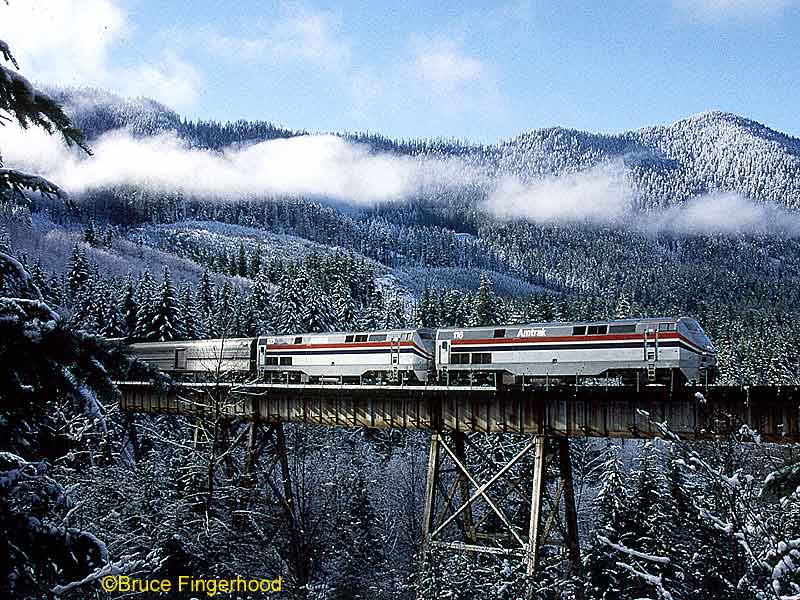
Images of the Rails
By Bruce Fingerhood
I’ve been fascinated by trains from a very young age. They are big, noisy, mechanical, and are on the move to faraway, mysterious places. They’re going somewhere over the horizon, somewhere back in time, somewhere different from where I am. Experiencing the sights, sounds, vibrations, and smells by the side of the tracks is a special moment for me. Capturing such a moment on film secures it in my memory, and allows me to share it with others.
Train photography is somewhat different than other subjects. On the one hand you always know where the train will be – on the tracks – but not always when. They frequently travel through photogenic locations, both urban and rural, but their large size can present a challenge in finding a large enough opening through which to create an interesting scene. Then there is lighting – it can be tricky to obtain complementary lighting between where the sun is and where the trains are. Correctly exposing a big, black, steam locomotive that “sucks” light can be a problem. Finally, since they are usually moving, sometimes quite fast, there is the tradeoff between shutter speed and optimum exposure.
I try to create images which are attractive and interesting in themselves, but which happen to include a train. I like to use strong color, interesting structures, natural scenery and long focal lengths to make a dramatic scene. The basic rules of photography apply, but also a lot of personal vision. I’ll see a photo I like and try to analyze what it is about that photo that appeals to me. I can then utilize those elements to create my own. What follows are some of my visions.
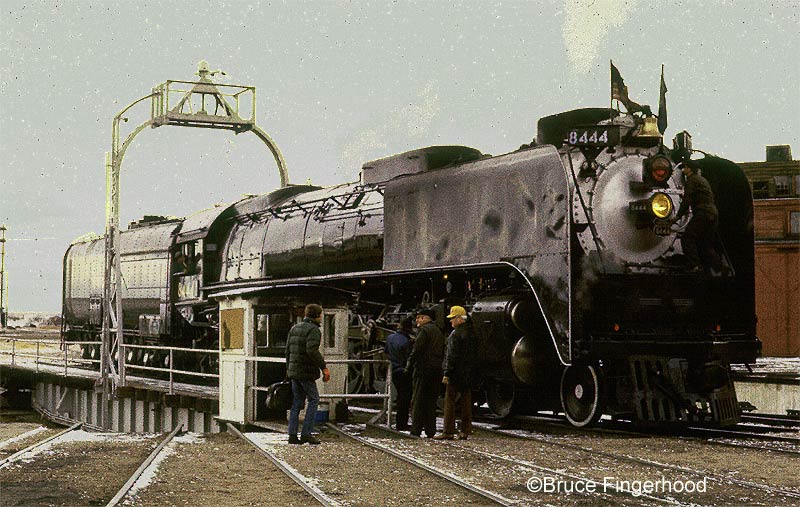
The Union Pacific Railroad has two working steam locomotives that run
around the central and western US pulling special trains. Since virtually
all steam locomotives were taken out of regular service by 1960, seeing
one of these run is a trip back in history. The locomotives are maintained
in Cheyenne Wyoming. In 1977 I happened upon the #8444 being put away
after an excursion from Denver the previous day. It was a cloudy but bright
fall day and obtaining a satisfactory exposure between the bright sky
and dark locomotive was tricky.
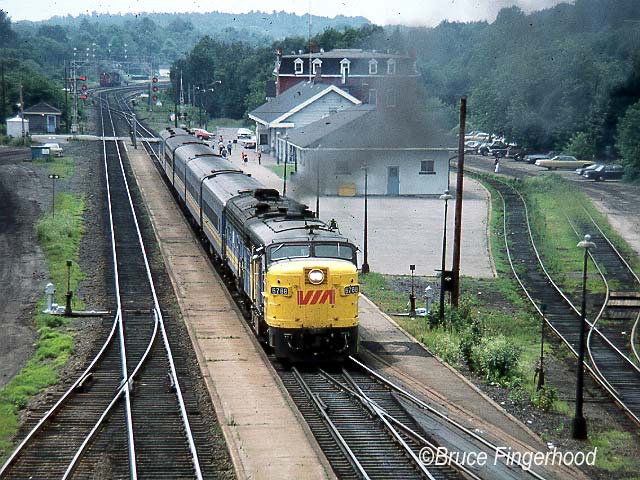
Canadian railroading up until the late 1980s was about 30 years behind
the US. Old locomotives and cars, trackside structures, and operating
practices made it a fascinating place. Brockville Ontario is small city
on the mainline between Montreal and Toronto. In the 80s it was well served
by rail, with 20+ trains stopping per day.
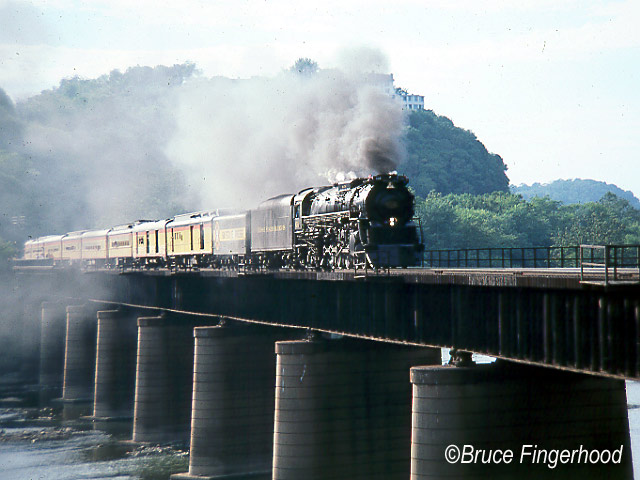
In the early 1980s, the Chessie Railroad publicized rail safety by running
a steam powered special around their system, mainly in the mid –
Atlantic states. I caught one of these excursions on the historic Potomac
River Bridge leaving Harpers Ferry, WV.

By 1983 only one privately operated passenger train was left in the US,
the Rio Grande Zephyr. In the last week of operation I traveled to Colorado
to shoot this last historic remnant of the once vast system of intercity
trains. After its arrival in Denver, I got this after dark image of a
classic American passenger train. I used the “open flash”
technique. Set the camera on a tripod, shutter on B, open the lens then
run around firing flashbulbs for 45 seconds.

Another railroad actively running historic equipment in the 1980s was
the Southern. The mainline south of Washington DC regularly saw excursions
powered by both steam and historic diesel locomotives.
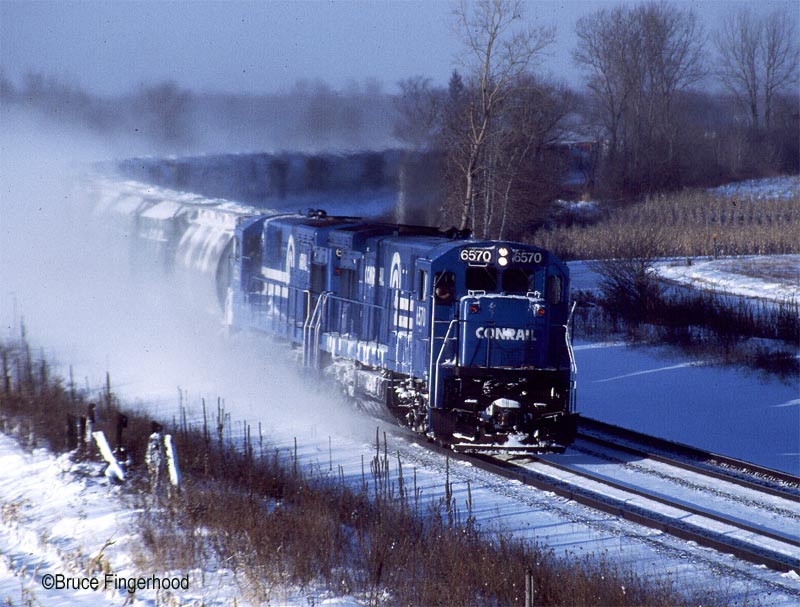
On a bitterly cold but clear December day, a Conrail freight creates its
own blizzard as it traverses upstate New York. With the wind chill, getting
out of the car for 30 seconds to take the picture was the limit of my,
the camera, and the film’s endurance. Weather this cold turns film
brittle, freezes camera mechanicals, and frosts lenses (and photographers!).
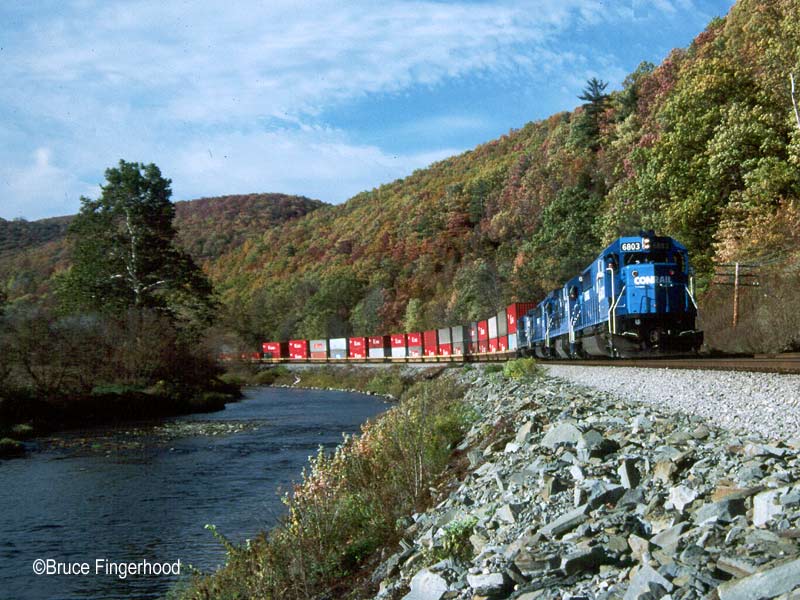
On a much more pleasant day, another Conrail freight traverses the scenic
Canisteo River gorge, also in upstate New York. I was trying to get some
fall coloring - not easy, as peak color, sunny days and time off from
work did not often happen at the same time.
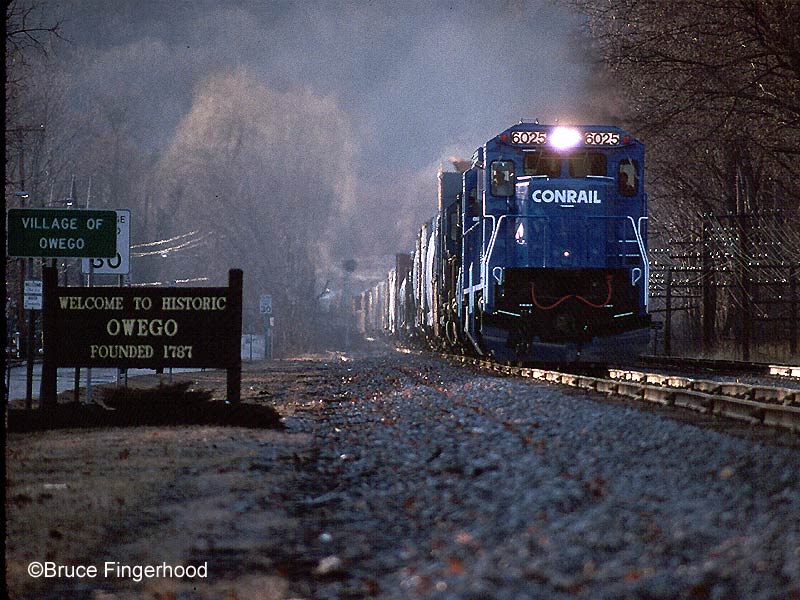
Summer days in the northeast are frequently hot, humid and hazy. This
can lead to muted colors, so I try to incorporate interesting structures
or signs, to add interest.
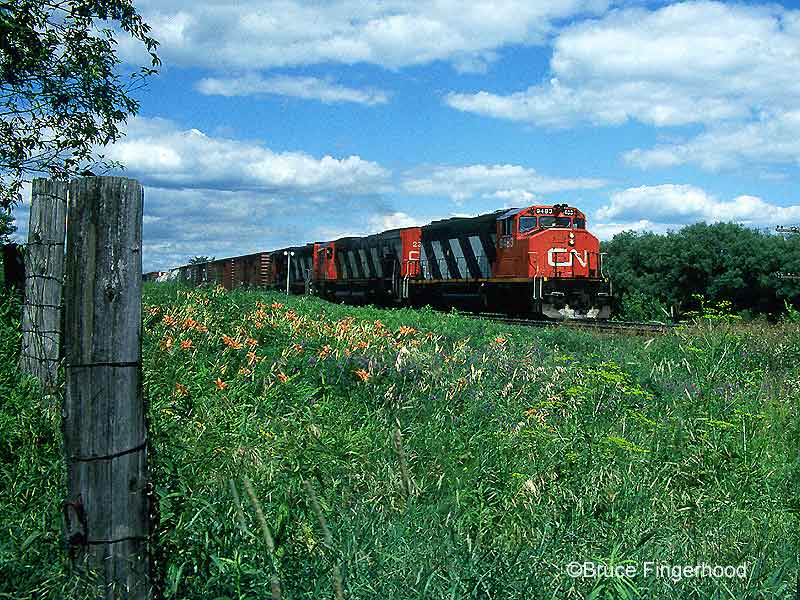
Occasionally during the summer, a big high pressure ridge would push through,
clearing the haze and humidity and providing brilliant sunshine and clear
skies. On one of those all too rare days, I captured a Canadian National
freight blasting through the Ontario countryside. The tree, fencepost
and flowers all add visual interest.
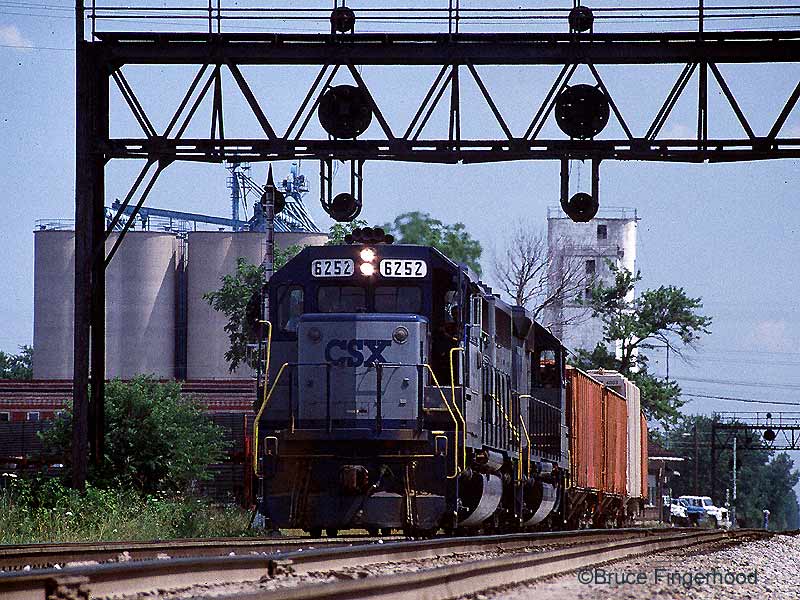
Deshler Ohio is a small town, unremarkable except for the fact that two
major rail lines intersect there. That makes for a lot of trains, and
a lot of photo opportunities. In my photo I’ve used the signal bridge
and grain elevators to add some interest, and shot from a low angle to
make the train more massive.

One of the real superstars of train photography was O. Winston Link, who
elevated the genre to an art form with his nighttime images of the last
of steam in the 1950s, and is a great inspiration to me. I’ve emulated
his work here, aided by a cooperative railroad who obligingly parked the
train on the bridge, and a battery of helpers to fire flashbulbs from
multiple locations for this 45 second exposure.
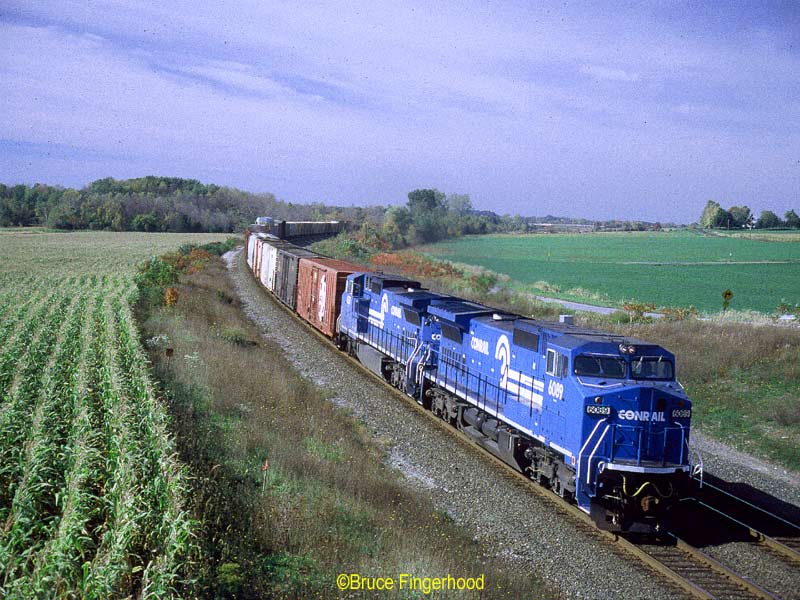
Early fall is a lot more pleasant time to be trackside in upstate New
York than the dead of winter. One of my favored locations on the Conrail
mainline was the town of North Weedsport. It offers a curve, some elevation
to shoot from, a rural setting, and at this time of year a hint of fall
color.
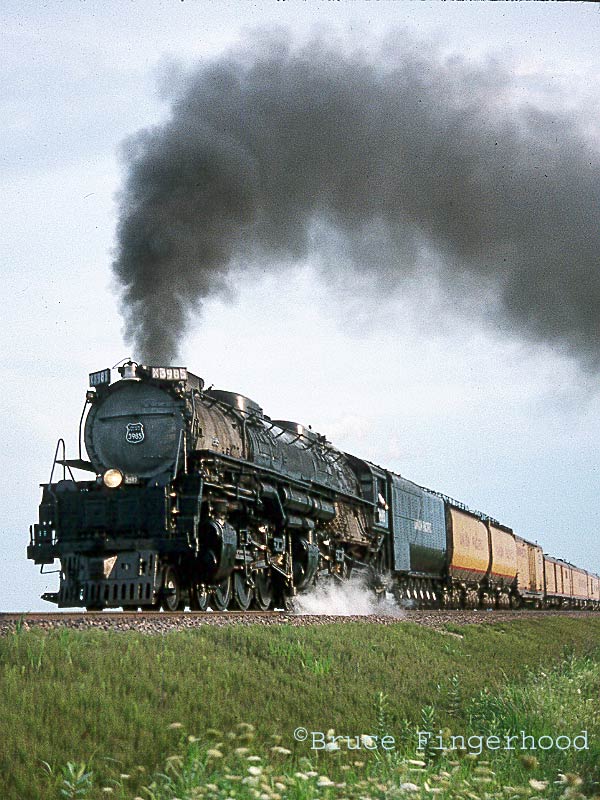
The other big steam locomotive used by the Union Pacific is their #3985.
In 1993 it traveled to Chicago for a convention of railfans, the National
Railway Historical Society. An excursion was run from the windy city down
to mid state. This line is very straight, with little in the way of scenic
interest. By shooting vertically I was able to capture the dark plume
of smoke against the sky, the flowers in the foreground, and crop out
the many other photographers trying to get the same shot.
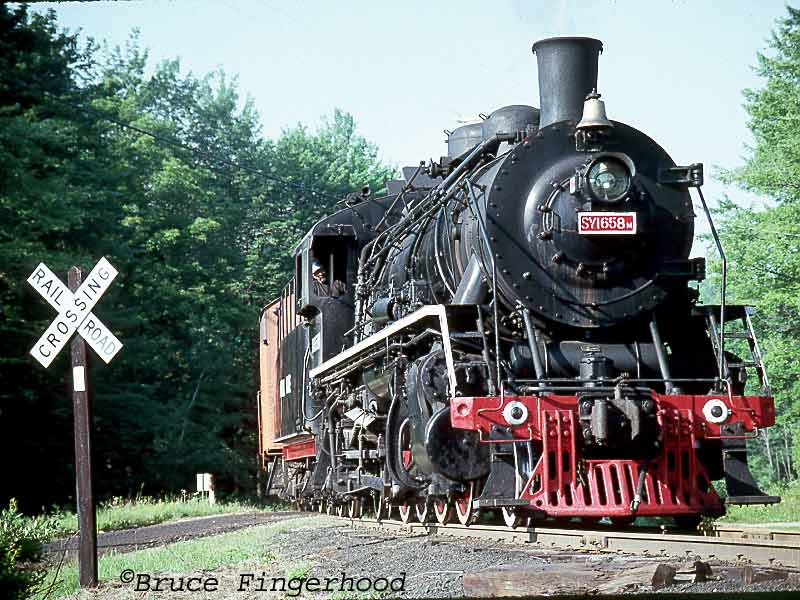
Not everything that looks old necessarily is! In the early 1990s, mainland
China was still building new steam locomotives. Three were imported into
the US for tourist railroads, including the Knox and Kane RR of central
Pennsylvania. I captured their brand new steamer rounding a curve. The
crossing sign balances the picture, and shooting from a low angle makes
for a more dramatic image.

The day before Christmas and the railroad is shutting down for the holiday.
All freights are being parked as they reach a siding or yard, so the only
train running is Amtrak’s Coast Starlight, hauling passengers between
Los Angeles and Seattle. Earlier that morning it had snowed in the Cascade
Mountains of Oregon, but by the time the train reached the Salt Creek
Trestle the sun was out.
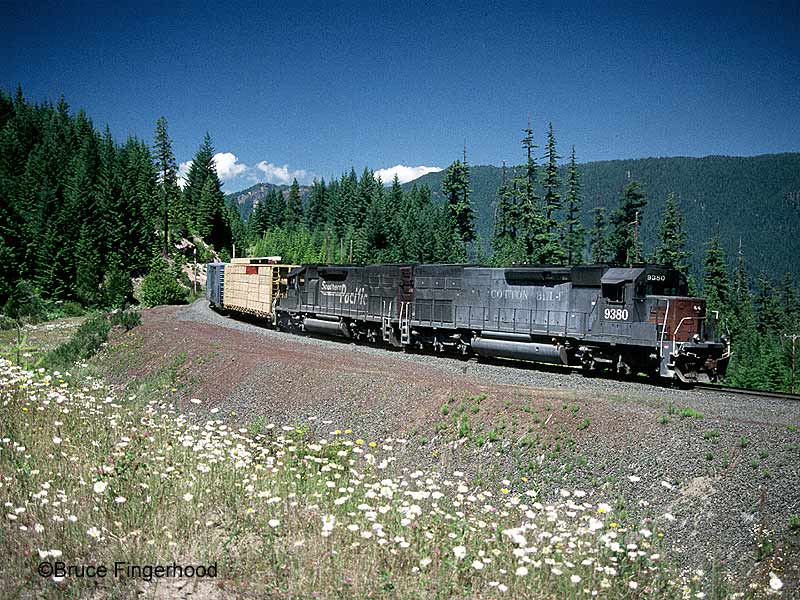
One of my favorite locations is Fields, Oregon high in the Cascade Mountains.
The location offers good lighting throughout the day, a curve, a view
across the Salt Creek Valley and a variety of angles to shoot. It is on
a steep, long, uphill grade, so the locomotives are working hard, often
producing dramatic clouds of black diesel exhaust.
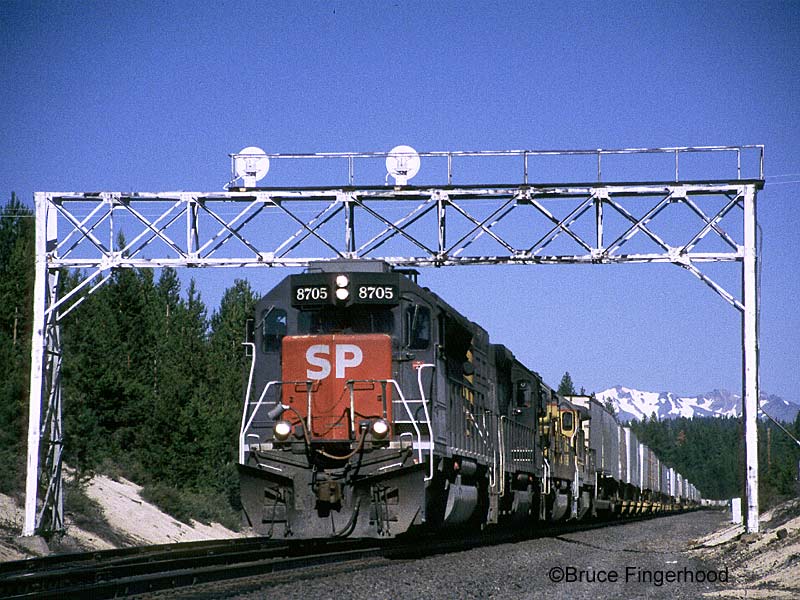
Another photogenic spot is Mowich, Oregon. The location provides an interesting
structure (signal bridge), a long straight stretch of track with a curve
in the distance, and perpetually snow covered 8700 foot elevation Diamond
Peak in the background.
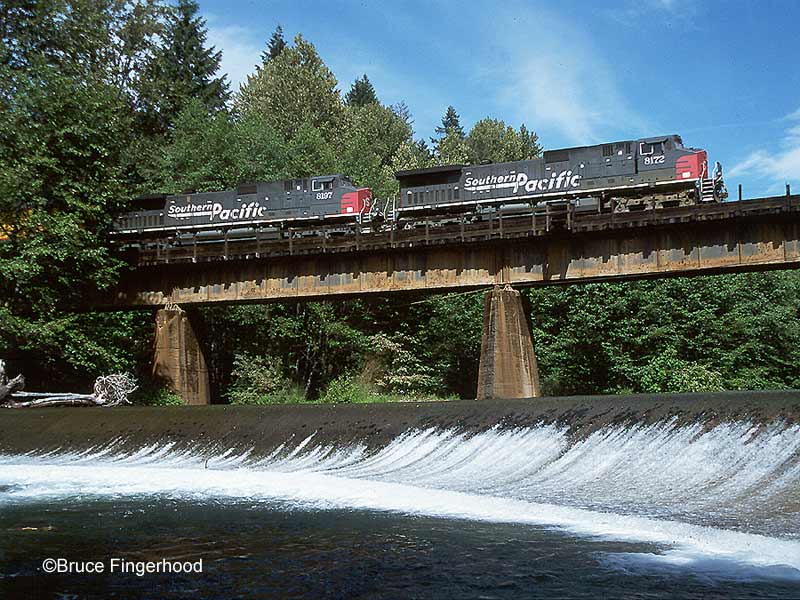
In 1995, the Union Pacific Railroad took over the Southern Pacific. It
became a mission then, to document the remaining vestiges of the SP before
they completely disappeared. For a period of time after most SP locomotives
had been either repainted or retired, the intermodal train between southern
California and the northwest continued to have solid sets of SP locomotives.
I captured a set on the bridge over Salmon Creek, near Oakridge Oregon.
Besides the historic significance of the locomotives, the picture is attractive
due to the bridge structure, the whitewater underneath, the balance between
the train and the water.
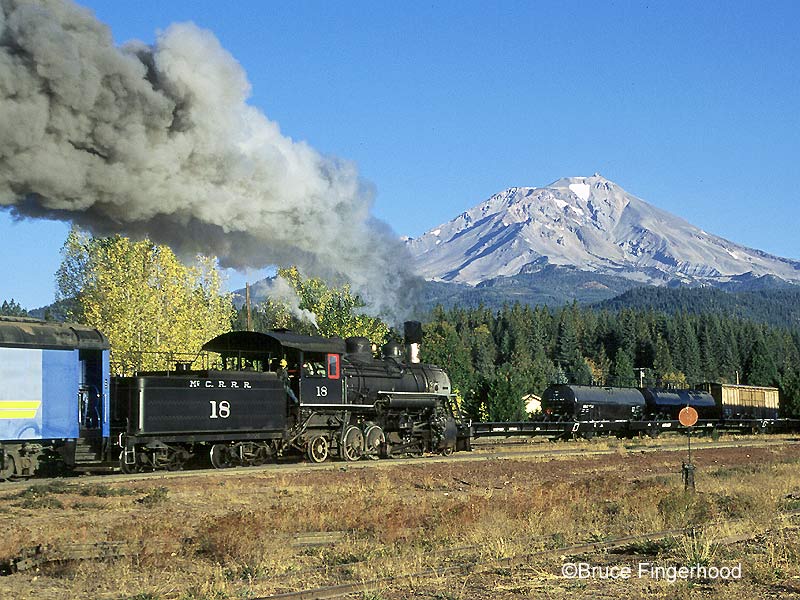
The McCloud River Railroad runs below Mt. Shasta in northern California.
It used to be a lumber hauler, but in recent years as the wood product
industry has downsized, most of their revenue has come from tourists.
A brisk October morning has #18 leaving the yard at McCloud with a fall
foliage excursion train. The cold air makes the steam exhaust condense
into a photogenic cloud, while the crystal clear sky allows an unobstructed
view of Shasta’s summit. A background of Aspens provides a touch
of color.
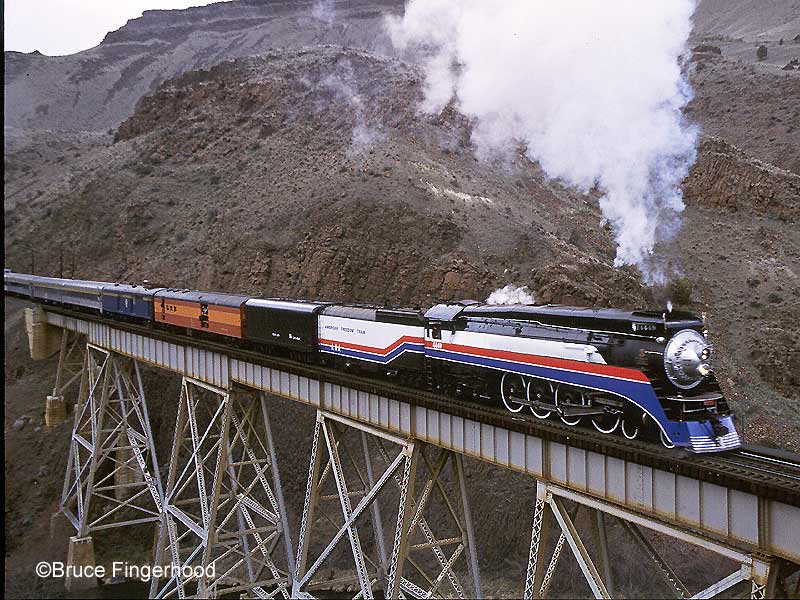
Southern Pacific steam locomotive #4449, now owned by the city of Portland
Oregon, is one of the big steamers still powering mainline excursion trains.
In 2002 it was repainted into the red, white and blue paint scheme it
wore during the bicentennial year of 1976. I captured it crossing Trout
Creek Trestle, in eastern Oregon.

One of the challenges I enjoy is finding new ways to view and photograph
the same old subject. I could take a standard picture of Amtrak’s
Coast Starlight any day. The equipment is always the same, so to get a
different image, I waited until the sun was nearly set. The golden monochromatic
tones, the background mountains already hidden in darkness, the underexposure
– provided illumination for just the train and the rails.
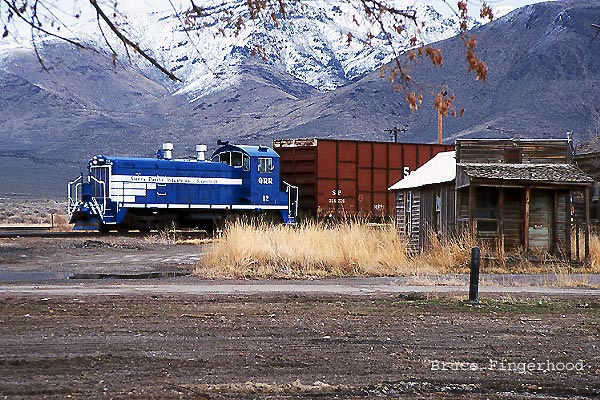
The tiny town of Wendel is not what most people have in mind when they
think of California. It is miles from anywhere, with no beaches, freeways,
palm trees, and very few people. This is where the Sierra Pacific RR connects
with the outside world. The town has been more prosperous in the past,
as evidenced by the many abandoned, decaying buildings. They make excellent
props to balance the locomotive in this shot, as do the overhanging branches.
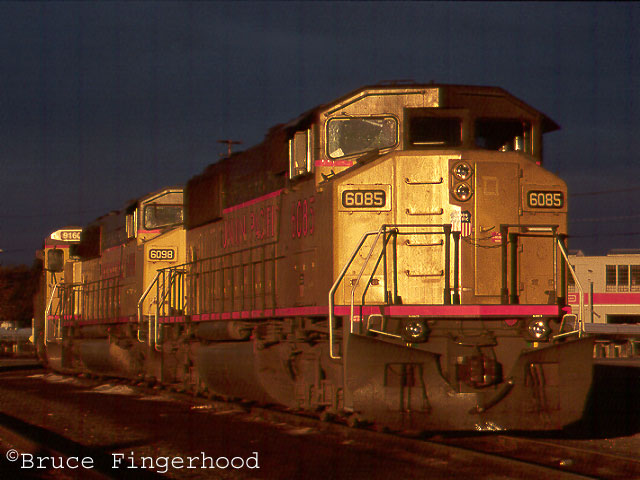
Because of the location between the Pacific Ocean and the Cascade Mountains,
the Willamette valley has many grey winter days, with a thick, pea soup
like fog. Some days the sun will sneak in under the overhanging fog at
first light, and bathe everything in a beautiful golden glow. Driving
into work one day, I passed by the yard during that few minute window
of magical lighting, and because I always carry a camera in the car, was
able to grab some shots before the fog settled in.